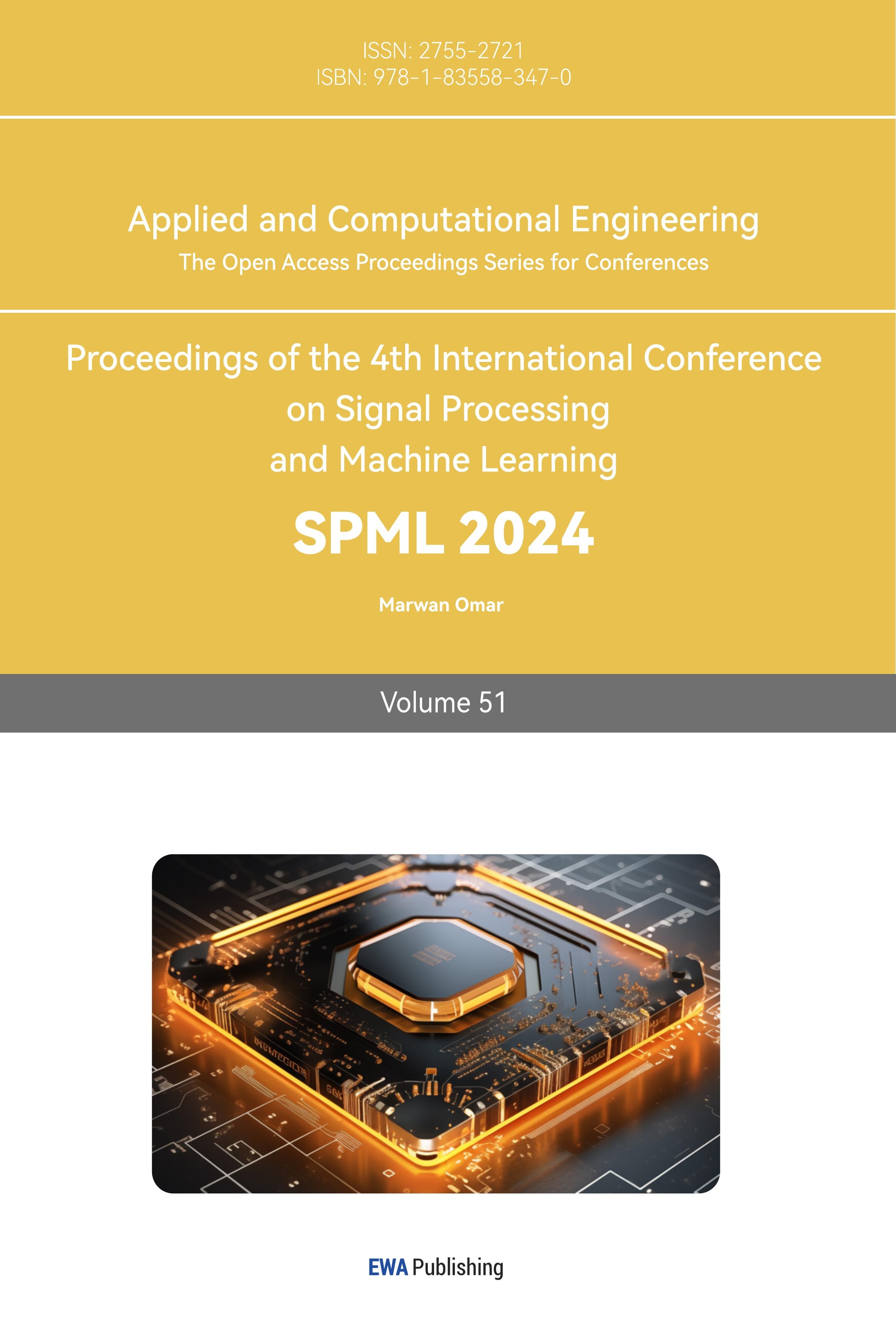1. Introduction
The likelihood of falls is influenced by various factors, with age emerging as the most predominant determinant. Recent demographic statistics from the National Bureau of Statistics reveal that China has transitioned into an aging society. As of the end of 2019, individuals aged 65 and above comprised 12.57% of the nation's total population, a figure projected to rise in the subsequent years [1, 2]. Concurrently, the annual count of individuals needing treatment due to falls stands at 37.3 million, equating to an alarming rate of roughly 70 individuals per minute. The economic burden stemming from fall-related injuries is also substantial. As shown in Figure 1.
To proactively monitor the elderly population and diminish the repercussions of falls, the evolution of fall detection technology becomes crucial. Broadly, fall detection technologies bifurcate into two primary categories: wearable and non-wearable methodologies [3]. As implied, wearable fall detection technology pivots on devices donned by individuals for monitoring, albeit they can be cumbersome. Such wearable instruments necessitate users, predominantly the elderly, to maintain them charged, presenting certain impracticalities. In contrast, non-wearable fall detection technologies present advantages such as a broader scope of detection, minimal human intervention, timely responses, cost-effectiveness, and superior accuracy. This paper delves into non-wearable fall detection techniques, offering an in-depth comparison and summarization.

Figure 1. Classification of Non-Wearable Fall Detection (Photo/Picture credit: Original).
2. Computer vision
2.1. Infrared camera
Infrared heat signals display temperature distribution within a designated range, enabling falls to be detected with remarkable accuracy, while also ensuring a high level of privacy, unaffected by the intensity of external ambient light. In the absence of any individual within the detection zone, the infrared camera captures a consistent, minor ambient temperature distribution. However, the temperature distribution exhibits a significant shift once an individual enters the detection area.
A comprehensive detection process is outlined in [4]. Here, each frame of the infrared temperature image from the sensor is captured within a mathematical matrix. Considering the sensor's transmission efficiency, the variance in temperature value change per pixel per second can be deduced. After forming the temperature variance matrix, the peak variance of the temperature distribution in the i-frame is noted as the maximal variance value for the 64 individual pixel points in the temperature distribution matrix. Hence, the maximal variance of the temperature distribution \( {V_{{a_{i}}}} \) in frame i is the peak variance value among the 64 pixel points in the temperature distribution variance matrix of that frame, represented as \( {V_{{a_{i}}}}=max({V_{i}}) \) . This maximal temperature distribution variance \( {V_{{a_{i}}}} \) remains minor when the detection area is devoid of human presence. However, it increases significantly when an individual is nearing, walking, or experiencing a fall, with the variance being particularly notable during a fall.
\( [\begin{matrix}{V_{a11i}} & ⋯ & {V_{a18i}} \\ ⋮ & ⋱ & ⋮ \\ {V_{a81i}} & ⋯ & {V_{a88i}} \\ \end{matrix}] \) (1)
\( {V_{{a_{mni}}}}=\frac{1}{10}\sum _{i={i_{c}}-9}^{ic}{({a_{mni}}-{\overline{a}_{mn{i_{c}}}})^{2}} \) (2)
2.2. Depth camera
When a depth camera captures an image, it produces an RGB-D image, a fusion of a color (RGB) image and a depth image. This allows each pixel in the captured image to store the relative distance between the camera and the target object. Depth cameras have distinct advantages. They remain largely unaffected by external light and shadow variations, ensuring accurate positioning and object identification. Traditional optical cameras, when capturing distant objects, deal with light diffraction caused by atmospheric elements like water vapor and dust. This can make distant scenes appear hazier and less saturated. Depth cameras effectively sidestep this saturation inconsistency issue. Furthermore, when it comes to object outline detection, depth cameras are adept at circumventing shadow-related recognition problems.
Leveraging the SDK provided by Microsoft, one can extract 3D coordinate information of individual human joints from the data captured by devices like the Kinect. This makes it possible to use the distance features of joints as a standard to assess human body activities. A noticeable aspect of a falling action, for instance, is the change in the human body's height. This characteristic can be efficiently extracted using depth information based on this observation [5]. This detection system can even be integrated into smartphones, allowing for the calculation of the distance from a joint point to the ground using the plane information in Microsoft's SDK. Utilizing Kinect's real-time skeletal tracking technology, three critical skeletal points are chosen: the body's center, the center of the body's two hips, and the right foot. With these three points, the system calculates the body center's distance from the ground, the body's vertical velocity, and the vertical distance between the hip center and the foot. In the proposed algorithm, if the vertical speed of the body's center exceeds a threshold speed "v", and the vertical distance between the hip center and the foot is less than "H", the system concludes that a fall has taken place. Consequently, the system triggers a fall alert. As shown in Figure 2 and 3.
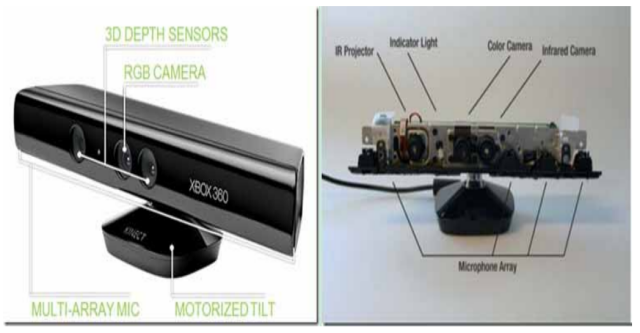
Figure 2. Schematic diagram of kinect (Photo/Picture credit: Original).
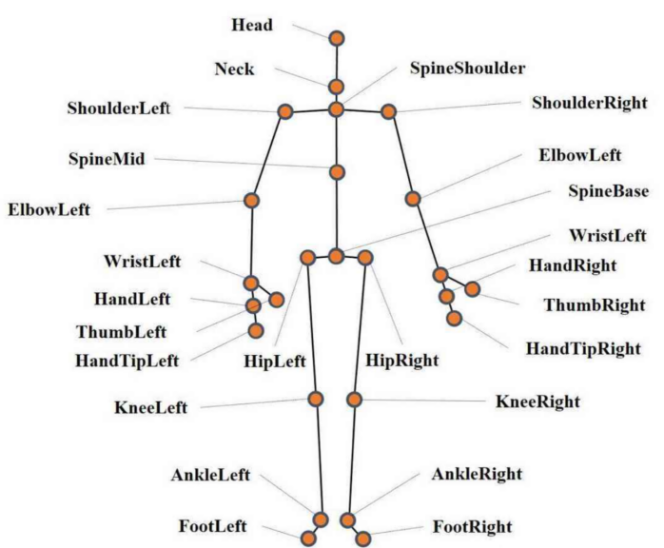
Figure 3. Schematic diagram of kinect detecting joint points (Photo/Picture credit: Original).
3. Environmental sensor
3.1. Laser radar
The application of LiDAR to obstacle and human body detection has had a large number of studies and applications. LIDAR is similar to depth camera, can directly obtain the depth information of obstacles, not easily affected by external conditions, high ranging accuracy, good real-time, suitable for obstacle detection field. An experiment was designed in to utilize LiDAR for indoor fall detection: the LiDAR was placed against a wall at a height above the waist of the human body [6]. A single line LIDAR is used to rotate the laser beam in a plane to obtain the distance to the obstacle in a plane di, i=0,1,2, ......., n. The data from the LIDAR also includes the scanning range [anglemin, anglemax] and the angle Δθ of each scanning. The coordinates of the point relative to the center of the LiDAR (Xi, Yi) can be found based on the distance, scanning range and angular resolution, where:
The workflow of LIDAR indoor detection of human fall is as follows.
(1) Collect the indoor initial distance array {d^i}, i=0,1,2,......., n. (2)Collect real-time measurements to obtain the distance array {di}, i=0,1,2,...,n; make a difference between the distance array {di} and the initial distance array {d^i} to obtain the absolute value {di'}, i=0,1,2,...,n; compare the absolute value {di'} with the threshold value D , it is considered that the points with di' larger than D may be human body, and the sequence of points suspected to be human body can be obtained. (3) The minimum number of sampling points of human body is calculated as M by experiment, if the length of the human body point sequence is more than M, it is considered to be an object or a human body, otherwise, it is considered that there is no human being or a fall. As shown in Figure 4.
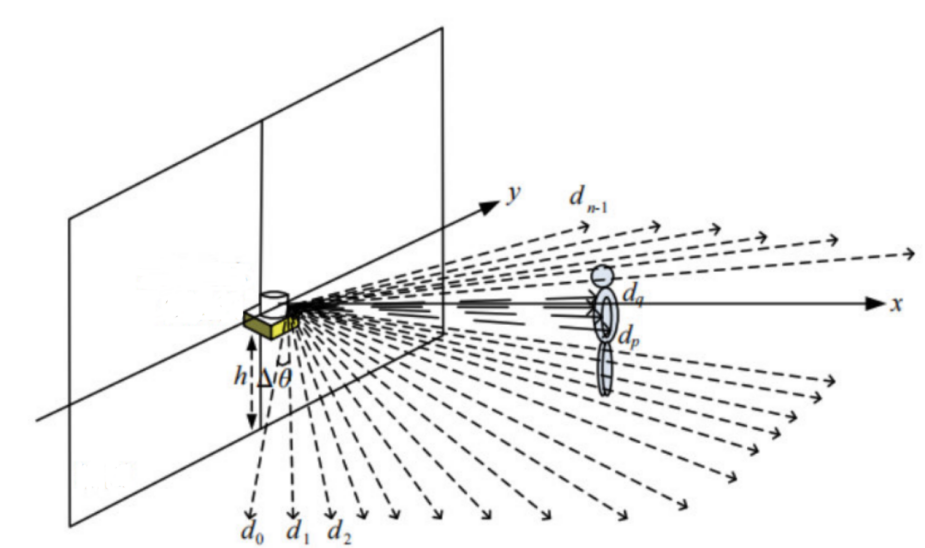
Figure 4. Principle of LIDAR Fall Detection (Photo/Picture credit: Original).
\( \begin{cases} \begin{array}{c} {X_{i}}=cos{({angle_{min}}+k×∆θ)×{d_{i}}} \\ {Y_{i}}=sin{({angle_{max}}+k×∆θ)×{d_{i}}} \end{array} \end{cases} \) (3)
3.2. Acoustic sensors
The velocity of the fall will change significantly, and it is possible to determine whether the human body has fallen or not by the ultrasound frequency shift produced by the human Doppler effect. Experiments were designed by jielian et al. in [7]. The experimental steps are shown in Figure 5. In the experiment, the relevant threshold can be set for each data to reduce the interference caused by other actions, medium noise and wall reflections. As shown in Figure 5.

Figure 5. Flowchart of the experiment (Photo/Picture credit: Original).
Acoustic sensors are very susceptible to external noise, which affects the accuracy, so the noise cancellation process is particularly important. In, three main types of interference were observed: 1) ambient reflections, 2) direct transmission, and 3) system defects. The energy around 20khz on the spectrogram can be simply removed to remove the direct transmission noise. The ambient reflection can be considered as stationary noise and it can be removed by spectral subtraction. The treatment of system defects is more complex. It was shown experimentally in that the energy levels of system defects can be modeled by Gaussian distribution. In the experiment, the amplitude of high-frequency (higher than 20.6 kHz) noise in the spectrogram was recorded, the noise histogram of the amplitude was constructed, and a threshold was set to remove the noise. After these processes, the external interference was successfully removed and only the Doppler signal was retained in the image. As shown in Figure 6.

Figure 6. Denoised spectrogram (Photo/Picture credit: Original).
3.3. WiFi
Most non-wearable detection systems achieve detection through changes in the environment, and they are usually costly and difficult to distinguish between strenuous human movement and human falls. With the widespread deployment of WiFi infrastructure, WiFi sensing-based human detection and activity recognition are increasingly used in people's daily lives, and fall detection can be effectively performed using WiFi devices. In addition, data detected using WiFi can be uploaded to the cloud for future data analysis and health assessment. As shown in Figure 7.
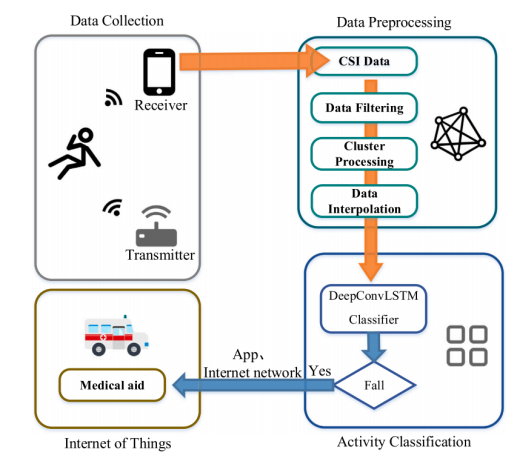
Figure 7. Basic Schematic of WIFI Detection (Photo/Picture credit: Original).
Experiments were designed in to complete the data collection. In the experiment [8], a certain area was planned according to the size of the room and the router and smartphone were placed. In order to reduce the signal interference from external objects, the router and the phone should preferably be on the same level. Multiple sets of data were collected at intervals of 100 data. the WiFi router broadcasts 100 packets per second with a data length of 500. each subcarrier was processed with a clustering algorithm to effectively remove noise from the data. As shown in Figure 8.
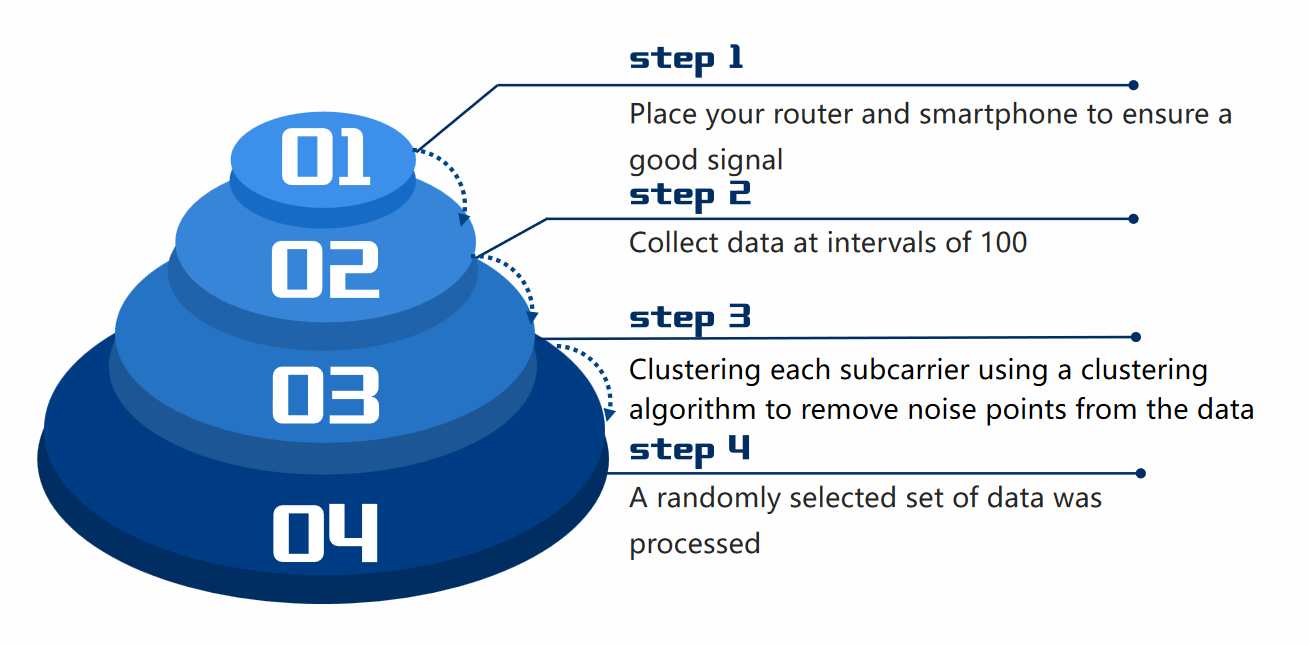
Figure 8. Flowchart of the experiment (Photo/Picture credit: Original).
4. Summary and comparison of method
As shown in Table 1. The table provides a comparison of various fall detection methods utilized in different scenarios, emphasizing their accuracy, advantages, and disadvantages. The "Bathroom fall detection based on the ultrasonic Doppler effect" boasts 73% accuracy and ensures high privacy, especially useful in bathroom settings, but struggles with noise and reflections due to confined spaces. Another method integrates motion features with deep learning, achieving a remarkable 98.3% accuracy, preserving motion information without frame loss; however, its limitation is that it's designed for recorded videos and might struggle in dynamic real-world environments. The infrared image-based fall detection system prioritizes privacy and scores 91.25% accuracy but might mistakenly classify sitting as a fall. Kinect-based methods offer 90.5% accuracy and are adept at detecting falls from multiple viewpoints but face challenges in static scenarios. WiFi-based techniques, integrating with the medical Internet of Things, notify falls immediately through smartphones but have sensitivity to environmental conditions, resulting in 87% accuracy. Audio Transformers, with 86.73% accuracy, leverage audio for fall detection, eliminating the need for line-of-sight but have limited application scenarios. MEMS Infrared Sensors provide 93.75% accuracy, considering various factors like temperature and lighting, but suffer from limited infrared pixel counts. Lastly, the inaudible acoustic sensing technique, leveraging existing home audio equipment, achieves 92.6% accuracy, though noise can pose significant challenges.
Table.1 Comparison of different fall detection methods.
Related Inspection Technology References | accuracy | advantages | disadvantages |
Bathroom fall detection based on ultrasonic Doppler effect [9] | 73% | High privacy, low impact on life, suitable for use in bathrooms | Smaller bathroom environment, more reflections, more noise, less accurate |
Fall detection algorithm integrating motion features and deep learning [10] | 98.3% | No frame loss during detection and good preservation of motion information | Detection only for recorded video, the real environment is more complex |
Fall Detection Algorithm Based on Multi Feature Extraction in Infrared Image | 91.25% | The system has the advantages of privacy protection, high accuracy and easy installation | There is a high rate of false alarms, mainly misclassification of sitting as a fall |
Research and Implementation of Human Fall Detection Based on Kinect | 90.5% | Detection of a human body that has fallen to the ground in a movable viewpoint | Static fall detection has poorer results than dynamic fall detection |
WiFi-based indoor passive fall detection for medical Internet of Things | 87% | When a fall is detected, the system immediately uploads to the web via smartphone | Wireless signals are very sensitive to line-of-sight and non-line-of-sight conditions |
Fall detection from audios with Audio Transformers [11] | 86.73% | Less invasive than vision-based methods, does not require in-line-of-sight detection | The mobile robot as a medium but the application scenario is only in the bathroom |
A Non-Contact Fall Detection Method for Bathroom Application Based on MEMS Infrared Sensors | 93.75% | Consider temperature, objective, lighting, fall rate, state, regional scene | The number of infrared pixels is small and can only be applied to localized fall detection |
Fall Detection via Inaudible Acoustic Sensing | 92.6% | Utilizes only existing home audio equipment, no need to purchase specialized equipment | Acoustic sensors are highly affected by noise and the noise cancellation process is more complicated |
5. Technology applications
In home living, many people would relax their vigilance and do not wear fall detection devices, but the problem of falls among elderly people living at home is still serious. The China Injury Prevention Report points out that not only is the living room not a safe place, but it is the first place where elderly people fall. Smooth surfaces such as floors and bathrooms can easily lead to falls, and light and clutter can also affect the activities of the elderly. By combining IoT technology and creating smart furniture, we can achieve non-wearable fall detection in the home environment, thus better monitoring of the elderly. As shown in Table 1.
With the development of technology, artificial intelligence has been widely used in electric power scenarios and their associated troubleshooting. However, in scenarios such as troubleshooting, manual involvement is still high, and the safety supervision of the relevant participants is not sufficient, and electrocution accidents often occur, while falls can occur during electrocution. Overhaul workers are often in the strong age group, and often work in high temperature environment, less wearable fall detection device, at this time, the addition of non-wearable fall detection device can effectively reduce work accidents, to ensure the safety of the workers [12].
With the development of science and technology, escalators are widely used in hospitals, airports, railway stations, large complexes and other facilities with huge flow of people. While bringing convenience, there are also many safety hazards. Among them, not a few passengers were injured because of falling on the escalator. When the escalator passengers are dense easily lead to a whole row of passengers are involved, serious trampling accidents. At the same time, passengers who are close to the edge or at the mouth of the escalator are very vulnerable to being caught in the machinery, resulting in even greater injuries. Of course, escalators are equipped with emergency stop buttons, but when the situation is uncontrollable, it is difficult to stop in time to reduce the damage. Many accidents would be avoided if they were detected and the lift stopped when a person falls.
Along with the marathon trend sweeping through China, safety accidents also came one after another. Taking the 2016 Guangdong Qingyuan Marathon as an example, with nearly 20,000 participating runners, a total of 12,208 people were treated, among which 3 cases went into the intensive care unit, 9,838 cases of muscle spasms, 1,743 cases of sprains, 194 cases of abrasions, 20 cases of fainting, 107 cases of abdominal pains, and 306 cases of defecation [13]. In the face of such a large number of injuries and illnesses, it has to arouse our great concern. When unconscious safety incidents such as sudden fainting, shock and sudden death occurred to the participants, this situation was usually accompanied by a sudden fall of the athletes. Athletes wear detection items that may affect performance, so non-wearable fall detection technology is needed to identify them and provide effective treatment.
6. Conclusion
This paper explores non-wearable fall detection methods, delving into the typical approaches from the realms of computer vision and environmental sensors, and evaluating their strengths and weaknesses.
Several limitations persist in current fall detection research. First, fall detection is constrained by present-day technologies. For instance, systems relying on scene sensors for fall detection typically demand high computational power. These systems also face challenges in achieving consistent accuracy across varying environments and are vulnerable to environmental factors, leading to higher maintenance costs. Furthermore, most fall detection experiments are currently conducted in controlled laboratory settings, which may not truly reflect real-world fall scenarios. Moreover, there exists a significant inconsistency in dataset standards across different experiments, hindering data integration and the evolution of fall detection technology.
Given China's established status as an aging society, research into falls — a major hazard to the elderly's physical and mental well-being — is gaining increasing significance. The imperative to enhance the elderly fall detection system is clear. In future developments, such a system should encompass both preventative and responsive measures, enabling both fall prediction and protection as well as fall detection, followed by immediate alerts for assistance. It's also crucial that the system integrates contextual information, ensuring accurate detection even when faced with obstacles within its range. Regarding equipment, there's a need to prioritize devices that are environmentally friendly, durable, and possess long battery life, guaranteeing consistent and efficient detection over extended periods.
References
[1]. World Health Organization. (2018, January 16). Falls. http://www.who.int/en/news-room /fact-sheets/ detail/falls.
[2]. National Bureau of Statistics. (2019). Age structure and dependency ratio of China's population in 2019. https://data.stats.gov.cn/easyquery.htm? cn=C01. Html.
[3]. Yangjiaozi, Z., & Shang, Z. (2021). Review on classification of human fall detection technology. Changjiang Information & Communications, 15-18.
[4]. Renbing, Y., Wenbo, C., Qing, Q., Qiang, Z., Jun, Q., & Yujun, P. (2017). Fall Detection Algorithm Based on Multi Feature Extraction in Infrared Image. Infrared Technology, 1131-1138.
[5]. He, H. (2018). Research and Implementation of Human Fall Detection Based on Kinect. Master's Thesis, Zhengzhou University.
[6]. Zhi, W., Weilin, W., & Xiandong, H. (2021). Design and Practice of Indoor Fall Detection System Based on Lidar. Audio Engineering, 45(11), 51-54.
[7]. Lian, J., Yuan, X., Li, M., & Tzeng, N. F. (2021). Fall Detection via Inaudible Acoustic Sensing. Proc. ACM Interact. Mob. Wearable Ubiquitous Technol., 5(3), Article 114.
[8]. Xia, Z., & Chong, S. (2023). WiFi-based indoor passive fall detection for medical Internet of Things. Computers and Electrical Engineering, 109, 108763.
[9]. Dajun, Z., Hengrong, L., & Youlong, W. (2018). Bathroom fall detection based on ultrasonic Doppler effect. Journal of Shanghai Normal University (Natural Sciences), 47(2), 225-229.
[10]. Jianrong, C., Junjie, L., Xinying, W., Xu, Z., & Hongjuan, Y. (2021). Fall detection algorithm integrating motion features and deep learning. Journal of Computer Applications, 41(2), 583-589.
[11]. Kaur, P., Wang, Q., & Shi, W. (2022). Fall detection from audios with Audio Transformers. Smart Health, 26, 100340.
[12]. He, C., Liu, S., Zhong, G., Wu, H., Cheng, L., Lin, J., & Huang, Q. (2023). A Non-Contact Fall Detection Method for Bathroom Application Based on MEMS Infrared Sensors. Micromachines, 14, 130. https://doi.org/10.3390/mi14010130.
[13]. Feng, Q. (Year not mentioned). Study on the fall detection algorithm for marathon movement. Master's Thesis, Wuhan Sports University.
Cite this article
Zhang,C. (2024). An examination of non-wearable methods for fall detection. Applied and Computational Engineering,51,137-145.
Data availability
The datasets used and/or analyzed during the current study will be available from the authors upon reasonable request.
Disclaimer/Publisher's Note
The statements, opinions and data contained in all publications are solely those of the individual author(s) and contributor(s) and not of EWA Publishing and/or the editor(s). EWA Publishing and/or the editor(s) disclaim responsibility for any injury to people or property resulting from any ideas, methods, instructions or products referred to in the content.
About volume
Volume title: Proceedings of the 4th International Conference on Signal Processing and Machine Learning
© 2024 by the author(s). Licensee EWA Publishing, Oxford, UK. This article is an open access article distributed under the terms and
conditions of the Creative Commons Attribution (CC BY) license. Authors who
publish this series agree to the following terms:
1. Authors retain copyright and grant the series right of first publication with the work simultaneously licensed under a Creative Commons
Attribution License that allows others to share the work with an acknowledgment of the work's authorship and initial publication in this
series.
2. Authors are able to enter into separate, additional contractual arrangements for the non-exclusive distribution of the series's published
version of the work (e.g., post it to an institutional repository or publish it in a book), with an acknowledgment of its initial
publication in this series.
3. Authors are permitted and encouraged to post their work online (e.g., in institutional repositories or on their website) prior to and
during the submission process, as it can lead to productive exchanges, as well as earlier and greater citation of published work (See
Open access policy for details).
References
[1]. World Health Organization. (2018, January 16). Falls. http://www.who.int/en/news-room /fact-sheets/ detail/falls.
[2]. National Bureau of Statistics. (2019). Age structure and dependency ratio of China's population in 2019. https://data.stats.gov.cn/easyquery.htm? cn=C01. Html.
[3]. Yangjiaozi, Z., & Shang, Z. (2021). Review on classification of human fall detection technology. Changjiang Information & Communications, 15-18.
[4]. Renbing, Y., Wenbo, C., Qing, Q., Qiang, Z., Jun, Q., & Yujun, P. (2017). Fall Detection Algorithm Based on Multi Feature Extraction in Infrared Image. Infrared Technology, 1131-1138.
[5]. He, H. (2018). Research and Implementation of Human Fall Detection Based on Kinect. Master's Thesis, Zhengzhou University.
[6]. Zhi, W., Weilin, W., & Xiandong, H. (2021). Design and Practice of Indoor Fall Detection System Based on Lidar. Audio Engineering, 45(11), 51-54.
[7]. Lian, J., Yuan, X., Li, M., & Tzeng, N. F. (2021). Fall Detection via Inaudible Acoustic Sensing. Proc. ACM Interact. Mob. Wearable Ubiquitous Technol., 5(3), Article 114.
[8]. Xia, Z., & Chong, S. (2023). WiFi-based indoor passive fall detection for medical Internet of Things. Computers and Electrical Engineering, 109, 108763.
[9]. Dajun, Z., Hengrong, L., & Youlong, W. (2018). Bathroom fall detection based on ultrasonic Doppler effect. Journal of Shanghai Normal University (Natural Sciences), 47(2), 225-229.
[10]. Jianrong, C., Junjie, L., Xinying, W., Xu, Z., & Hongjuan, Y. (2021). Fall detection algorithm integrating motion features and deep learning. Journal of Computer Applications, 41(2), 583-589.
[11]. Kaur, P., Wang, Q., & Shi, W. (2022). Fall detection from audios with Audio Transformers. Smart Health, 26, 100340.
[12]. He, C., Liu, S., Zhong, G., Wu, H., Cheng, L., Lin, J., & Huang, Q. (2023). A Non-Contact Fall Detection Method for Bathroom Application Based on MEMS Infrared Sensors. Micromachines, 14, 130. https://doi.org/10.3390/mi14010130.
[13]. Feng, Q. (Year not mentioned). Study on the fall detection algorithm for marathon movement. Master's Thesis, Wuhan Sports University.





